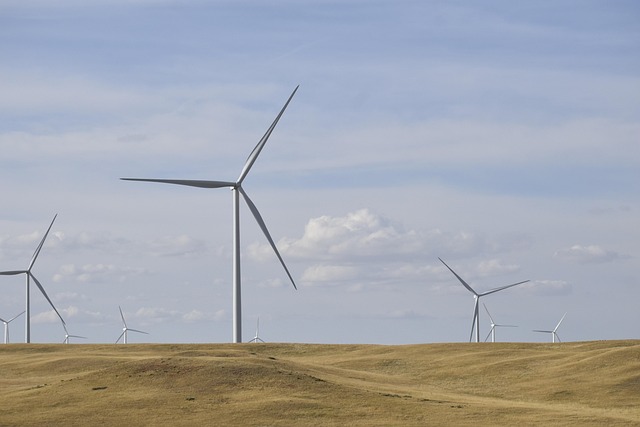As global temperatures rise, the urgency to rethink how we generate power grows ever sharper. Energy production, once largely centered on fossil fuels, now faces mounting pressure to evolve into cleaner, more resilient models that safeguard the planet while still powering modern life. The Tengerszint community, known for its close relationship with the sea, offers a unique perspective on how marine resources can be harnessed sustainably, blending tradition with cutting‑edge science to create a low‑carbon future.
Climate Change, the Environment, and the Energy Imperative
Scientific consensus confirms that human activity—particularly the combustion of coal, oil, and gas—has amplified greenhouse gas emissions, leading to measurable shifts in global climate patterns. Rising sea levels, intensified storms, and prolonged droughts all trace back to these emissions. The environment is not merely a backdrop but an active participant in the feedback loops that accelerate climate change. Thus, any discussion about energy production must integrate ecological considerations to prevent further harm.
Traditional energy production models have overlooked the long‑term ecological costs of extracting, transporting, and burning fossil fuels. Environmental degradation manifests in air and water pollution, habitat destruction, and biodiversity loss. To reverse these trends, the energy sector must pivot toward systems that are not only renewable but also regenerative, restoring ecosystems while supplying power.
Renewable Horizons: Harnessing the Power of the Ocean
The Tengerszint region sits on a coastline that offers rich potential for marine‑based energy production. Unlike terrestrial renewables, oceanic sources provide a stable, predictable, and abundant energy supply, largely unaffected by weather fluctuations that challenge solar and wind farms. Three primary marine technologies are gaining traction: offshore wind, tidal turbines, and wave energy converters.
“The sea’s rhythm has always guided our lives. Now, it can guide our electricity,” says Dr. Anika Lönn, a marine engineer working on Tengerszint’s first wave farm.
Offshore wind farms can capture the persistent breezes that blow across the ocean, producing electricity that rivals or surpasses inland wind projects in capacity. Tidal turbines, placed in fast‑moving currents, offer a predictable, clock‑like generation pattern, ideal for grid stability. Wave energy devices, still in developmental stages, promise to tap the kinetic energy of the sea’s motion, delivering power with minimal visual impact on the horizon.
Beyond the Sea: Integrating Solar, Geothermal, and Bioenergy
While marine solutions lead the charge in coastal communities, a truly sustainable energy ecosystem must blend multiple sources. Solar photovoltaic panels, already common in residential settings, can be paired with battery storage to smooth intermittent supply. Geothermal systems exploit the Earth’s internal heat, providing baseload power with negligible emissions. Bioenergy, when sourced responsibly, converts organic waste into fuel, closing the loop in local food and waste cycles.
- Solar farms on reclaimed land reduce pressure on natural habitats.
- Geothermal plants in volcanic zones maintain steady output with minimal environmental footprint.
- Biomass digesters process agricultural residues, generating heat and electricity while reducing methane emissions from decaying matter.
Policy, Community, and the Path to Decarbonization
Technological feasibility alone cannot guarantee a shift to sustainable energy production. Policies that incentivize renewable deployment, set stringent emissions standards, and fund research are essential. In Tengerszint, a local ordinance mandates that new industrial developments include a renewable energy component, ensuring that growth does not come at the expense of the environment.
Community engagement plays a pivotal role. When residents are involved in decision‑making—through town halls, participatory budgeting, and educational outreach—they develop a sense of ownership over the energy transition. Empowered communities can champion local projects, attract investment, and foster a culture that values environmental stewardship.
- Transparent communication builds trust between developers and residents.
- Citizen advisory boards provide feedback on site selection and technology choices.
- Educational programs in schools instill an appreciation for sustainable energy production from a young age.
Innovation at the Frontiers of Energy Production
Research institutions in Tengerszint collaborate with international partners to pioneer breakthrough technologies. One promising avenue is the development of floating solar arrays that can be deployed over offshore wind farms, effectively combining two renewable sources on the same footprint. Another is the optimization of battery chemistries—such as solid‑state lithium‑sulfur cells—that promise higher energy density and lower environmental impact during manufacturing.
Artificial intelligence and machine learning are being harnessed to predict weather patterns, optimize grid distribution, and detect maintenance needs in real time. These data‑driven approaches reduce downtime, improve efficiency, and lower overall emissions associated with energy production.
Case Study: The Tengerszint Wave Farm
The first wave farm in the region, commissioned last year, covers an area of 0.8 square kilometers off the southeastern coast. It employs 48 wave energy converters, each generating up to 500 kW. The project, completed under a public‑private partnership, supplies clean electricity to over 5,000 households, reducing local CO₂ emissions by approximately 7,000 tons annually.
“Seeing the turbines move with the waves reminds us that nature’s power is both inexhaustible and gentle,” comments local fisherman Tomas Håland, who has now diversified his livelihood by participating in the farm’s maintenance program.
Balancing Growth and Preservation
As energy production expands, careful planning is required to avoid ecological disruption. Environmental impact assessments must evaluate potential effects on marine life, coastal erosion, and water quality. Mitigation strategies—such as designing turbine foundations that minimize habitat loss, installing fish‑friendly grid lines, and scheduling construction to avoid breeding seasons—are integral to responsible development.
Moreover, adaptive management frameworks allow projects to evolve in response to monitoring data. If unexpected ecological impacts arise, stakeholders can adjust operations or implement remediation measures promptly, ensuring that the pursuit of sustainable energy does not compromise the very ecosystems it aims to protect.
Education, Research, and the Future of Energy Production
Academic programs in Tengerszint’s universities emphasize interdisciplinary research, pairing marine biology, electrical engineering, and environmental policy. Graduates graduate with the knowledge to design systems that are both technologically robust and ecologically mindful. The emphasis on hands‑on projects—such as building prototype tidal turbines or developing predictive models for wind patterns—cultivates practical expertise that translates directly into industry innovation.
Looking ahead, the integration of carbon capture and storage (CCS) with renewable energy production offers a pathway to negative emissions. By capturing CO₂ from industrial processes and storing it underground or converting it into useful products, CCS can offset residual emissions that still arise during the manufacturing and installation of renewable infrastructure.
Conclusion: Toward a Resilient, Low‑Carbon Energy Landscape
The challenges posed by climate change and environmental degradation demand a transformative approach to energy production. The Tengerszint region demonstrates how maritime resources, coupled with terrestrial renewables, policy innovation, and community engagement, can forge a path toward a cleaner, more resilient energy future. By embracing diverse renewable technologies, fostering inclusive governance, and committing to ongoing research, societies can not only meet their power needs but also safeguard the planet for generations to come.




